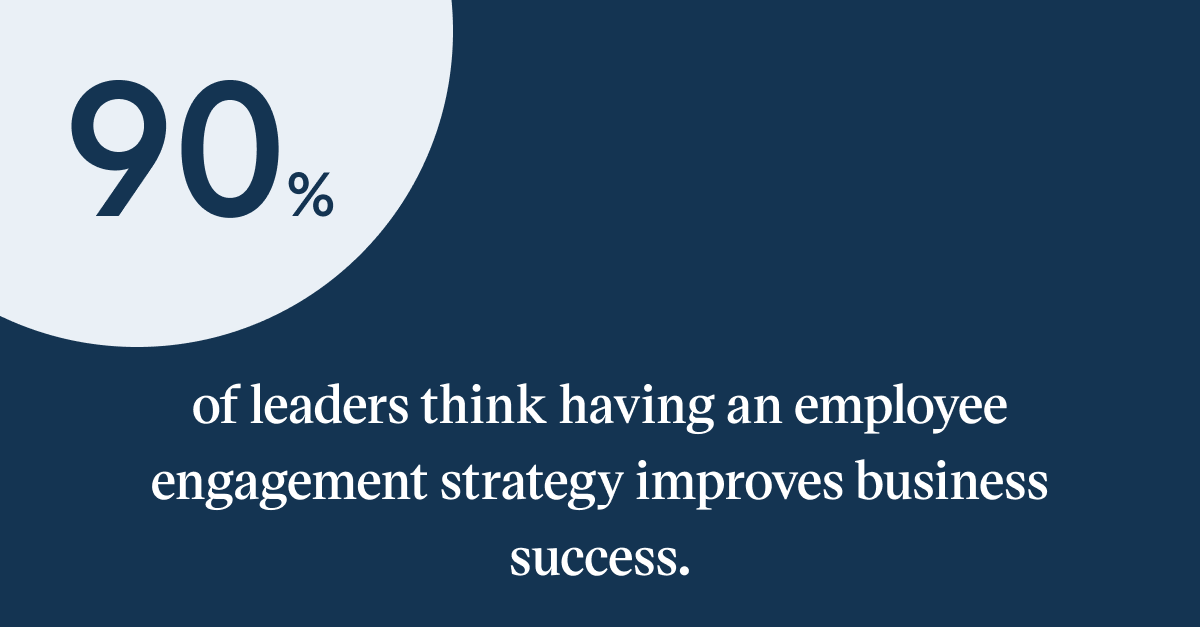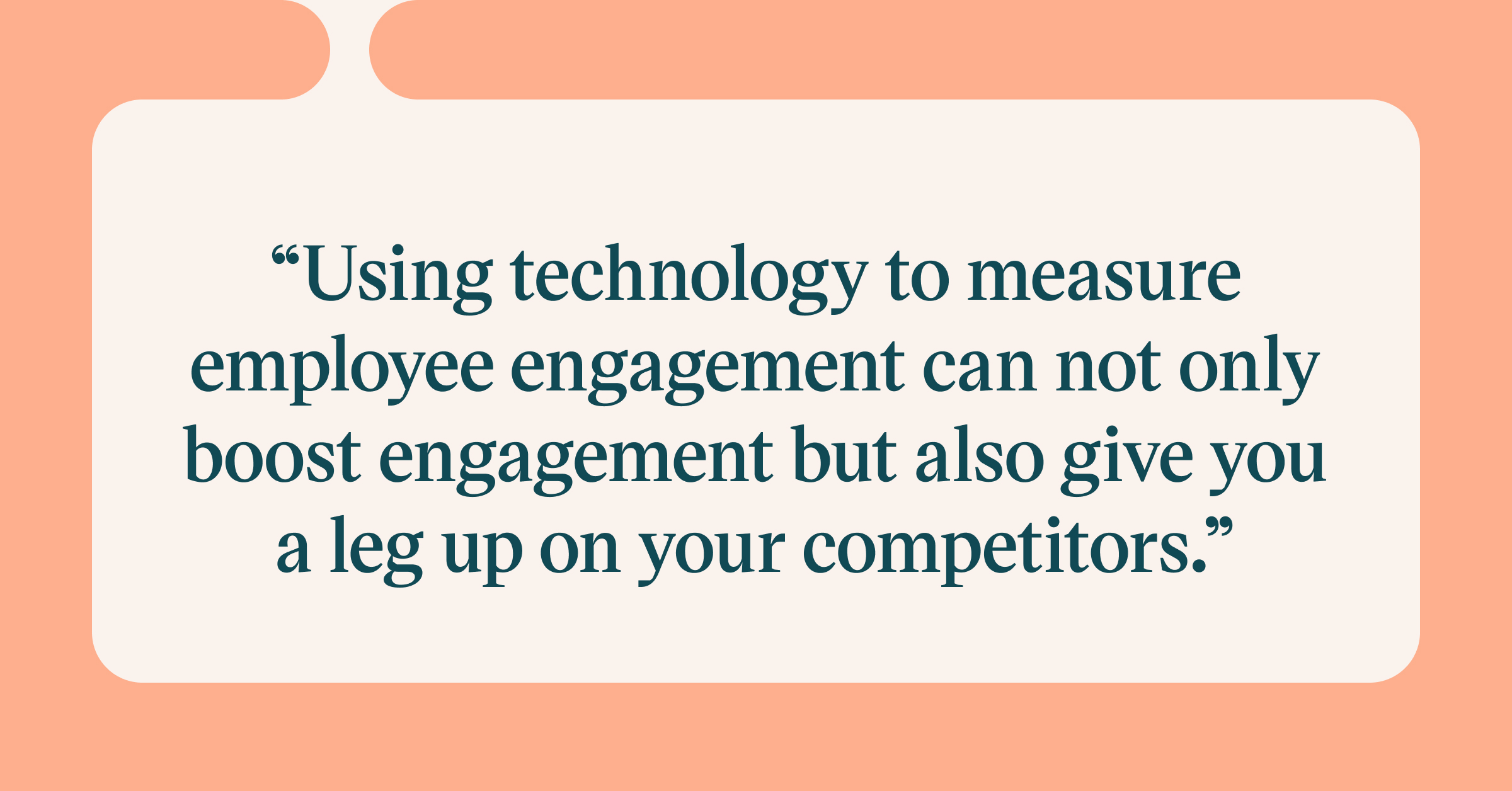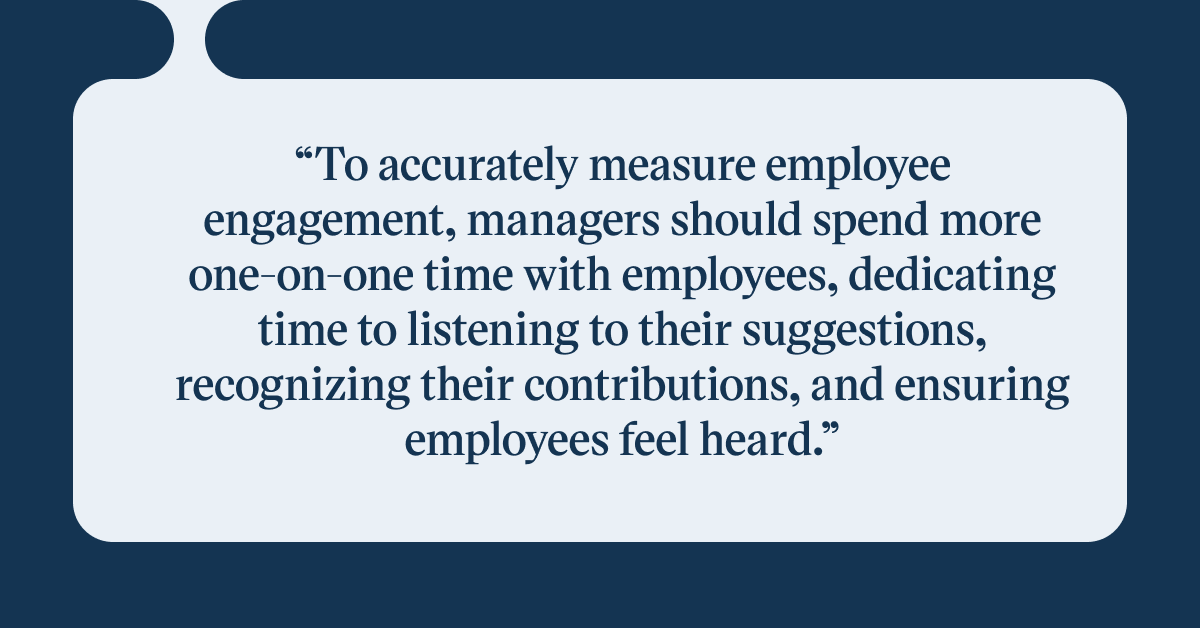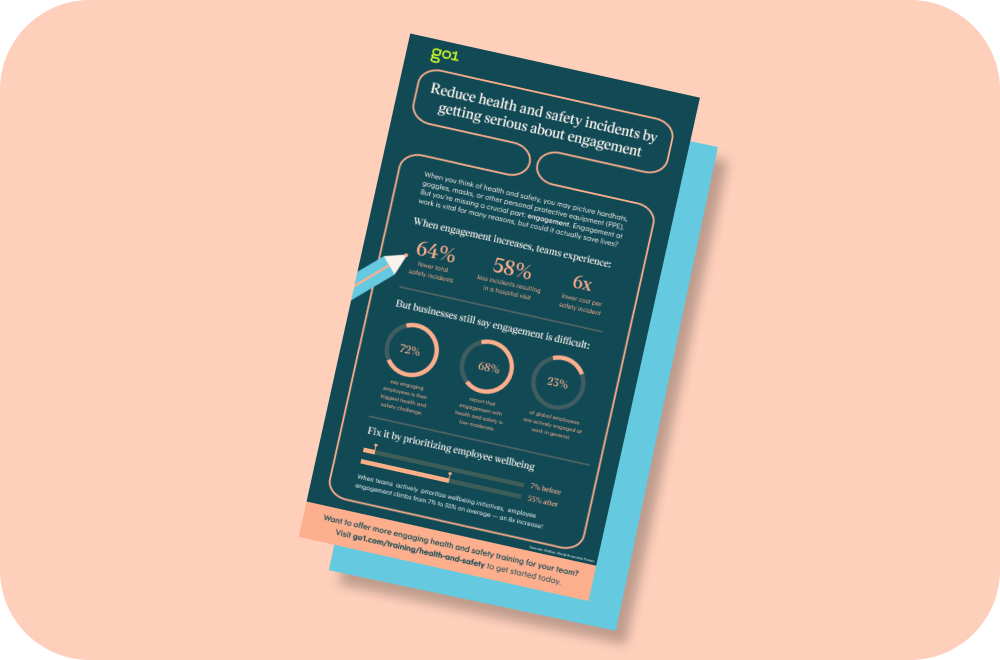
How to measure employee engagement

Engaged employees are the foundation of any successful organization. Without engaged employees, it’s impossible to thrive as a business. Yet, in recent years, several concerning employee engagement trends have emerged. For example, Gallup’s 2023 State Of The Global Workplace report found that “85% of employees are not actively engaged or are actively disengaged at work,” resulting in $7 trillion in lost productivity. That’s right, $7 trillion. With a T.

To break this down further, Gallup found that:
- 18% of employees are actively disengaged at work
- 67% are “not engaged” at work
- Just 15% of employees are actively engaged at work
At Go1, we believe engaged employees are essential, so we want to redress this worrying trend.
That’s why we’ve created our new eBook, Employee engagement strategies to build successful L&D programs, packed with tips, tricks, and insights to help managers boost employee engagement. But that’s not all, to accompany the eBook, we’re also launching a new blog series covering the ins and outs of employee engagement.
In this first blog, we’ll focus on measuring employee engagement. We'll start by analyzing the state of employee engagement, before outlining three essential strategies to measure employee engagement.
Then, in the coming weeks, we’ll expand on this with blogs on improving employee engagement in remote workplaces, the role of employee engagement in creating a culture of learning, and setting employee engagement goals that lead to business growth. Be sure to check back in regularly so you don’t miss these blogs and more!
Ready to enhance your engagement? Start here.
The state of employee engagement
Before we examine strategies to measure employee engagement, it’s important to set the scene by outlining the state of workplace engagement. Unfortunately, as mentioned, the current state of employee engagement is not encouraging. Just 15% of employees are actively engaged at work.
Among disengaged employees, 59% say they regularly feel stressed at work. What’s more, SHRM finds that just 29% of employees are satisfied with the career advancement opportunities their company offers, leading to lower engagement.
Largely, poor employee engagement falls on managers. 75% of disengaged employees blame their managers or broader company leadership. To make matters worse, 25% of employees say they don’t trust their employer. It’s difficult to engage with someone you distrust.
Perhaps more concerningly, only 22% of companies say they know what drives their employee disengagement. This is bad news, as it’s impossible to rectify employee disengagement if you can’t identify the root causes.

Moreover, 90% of leaders think having an employee engagement strategy improves business success. Yet, only 25% have one. Likewise, 87% of HR managers agree that improving employee engagement is one of their most important training goals. Despite this, 36% say increasing employee engagement in learning is also one of their biggest challenges. These stats tell a troubling story: there is a significant disconnect between what businesses want and what employees experience. While most teams want to increase engagement, it seems few know how.
The benefits of employee engagement
The current state of employee engagement leaves a lot to be desired — to say the least. Fortunately, it’s not all doom and gloom. When teams put in the effort to actively engage employees, the results can be astonishing.
For example, Gallup found that teams that rank in the top quartile for employee engagement experienced the following benefits:
- 81% less absenteeism
- 41% fewer product defects
- 18% less staff turnover
- 64% fewer safety incidents or accidents
- 10% higher customer loyalty/engagement
- 18% higher productivity
- 23% higher profitability
These figures speak for themselves — the benefits of employee engagement are something every business leader should strive to emulate.
How to improve engagement
So, what can teams do to improve engagement and reap these benefits? For starters, 92% of employees believe well-planned employee training programs positively impact their engagement, while 80% say learning and development opportunities would help them feel more engaged at work.
Further, 37% of employees say ‘more recognition’ would be the most important thing a manager or a company could do to improve employee engagement, making this the most popular response in a recent survey. To build on this, research shows that 84% of highly engaged employees were recognized the last time they went above and beyond at work, compared to just 25% of actively disengaged employees. In other words, a little bit of recognition goes a long way.
To learn more, download our eBook, Employee engagement strategies to build successful L&D programs.
3 essential strategies to measure employee engagement
As demonstrated, the benefits of employee engagement are significant. So, to help you boost engagement and reap these rewards, let's analyze three ways to measure employee engagement.
1. Surveys and feedback
Surveys are arguably the most common and popular tool for measuring employee engagement. Most employees will have taken a pulse survey throughout their careers. When used correctly, employee engagement surveys are incredibly valuable. Yet, surveys are often misused and misunderstood as a tool for measuring employee engagement.
For example, 58% of employees wish their company conducted employee engagement surveys more frequently. Despite this, only 21% of companies conduct engagement surveys three or more times a year. Worse still, 36% of employees say they either don’t have a feedback program at their company or aren’t aware of one.
Here, a significant disconnect between employees and managers emerges. 48% of senior managers say engagement surveys are highly valuable, whereas 45% of employees say surveys have little or no value. Similarly, 52% of senior managers feel engagement surveys provide a very accurate assessment, whereas 48% of employees believe the surveys do not provide an accurate assessment.
Why is this disconnect so apparent? Because many employees believe engagement surveys don’t lead to any actionable change. Just 20% of employees believe their manager would act on the results of an engagement survey. Unfortunately, they’re not wrong, as 27% of managers admit they never review survey results, while 52% say they have reviewed survey results but taken no action.
As a result of this disconnect, just 25% of employees feel like the feedback they receive from their managers is frequent enough to help them improve and reach their goals.
So, what can companies do to enjoy the benefits of employee engagement surveys? According to The State of Employee Feedback Survey, the number one thing (68.4%) employees need to feel heard is for their company to take feedback seriously and implement meaningful change. Yes, it really can be that simple!
To learn more, check out our article on why listening to employees is essential in the modern workforce.
2. Use technology to measure engagement
The world of work is continually evolving, with technology gaining primacy in more and more aspects of workplace life. Measuring engagement is no exception.
Many powerful tools help businesses measure employee engagement. As Culture Monkey explains, “by leveraging technology and utilizing data analysis techniques, organizations can accurately measure employee engagement and make the necessary changes to their workplace culture to maximize employee satisfaction and productivity.”
Similarly, eLearning Industry puts it in no uncertain terms, stating, “for organizations looking to improve employee engagement and organizational performance, leveraging technology is a must.”
However, many companies fail to harness the full power of technology for measuring employee engagement. A recent analysis by Gartner found that just 16% of employers use technologies to monitor their employees' engagement levels. Likewise, 64% of HR leaders say an always-on feedback tool is essential for an engagement program, but only 20% have this kind of tool in place.
On the other hand, when teams do harness technology as part of their engagement program, the results can be monumental. For instance, TriHealth, an award-winning American healthcare company, implemented an engagement tool featuring a powerful audience manager and AI-powered content delivery, which led to a 164% increase in engagement in a year.

Ultimately, these statistics present an opportunity for teams that are looking to gain a competitive advantage. Technology can be a powerful ally to boost employee engagement, yet few teams currently utilize engagement tools to their full potential. As such, using technology to measure employee engagement can not only boost engagement but also give you a leg up on your competitors.
To learn more, read our article on how technology has changed the way we learn.
3. 1:1 meetings & stay meetings
As mentioned, to boost engagement, employees want to feel heard. Additionally, they also want more recognition and want their feedback to be taken seriously. Stay meetings and 1:1 meetings tick all three of these boxes.
While you’re probably familiar with 1:1 meetings, stay meetings are less common. As BuiltIn explains, “a stay interview is a conversation with a high-performing employee with the goal of discovering what they like about their role, and what they would like to change. Stay interviews are an opportunity to both uncover what motivates that employee and to also build trust with them as a manager.”
Currently, just 28% of organizations say they currently use stay interviews. Although, organizations that don’t use stay interviews may be missing out, as research shows stay interviews can reduce turnover by at least 20%.
Moreover, a massive 70% of employees wish they could spend more time with their managers to create a stronger connection with them and the organization. Whether this is achieved via stay interviews, regular 1:1 meetings, or something else entirely, this is a statistic businesses cannot afford to ignore if they want to boost employee engagement.
Additionally, a survey on workplace rewards and recognition found that 43% of employees want to receive recognition privately in a 1:1 meeting with their manager. If you’re a manager, keep this in mind the next time you walk into a 1:1 or stay meeting with an employee.

Again, the message is clear: to accurately measure employee engagement, managers should spend more one-on-one time with employees, dedicating time to listening to their suggestions, recognizing their contributions, and ensuring employees feel heard. In turn, this will lead to more open, honest, and productive conversations about engagement.
For more insights, subscribe to the Go1 newsletter to stay on top of all the latest L&D trends. Or, you can book a demo today to find out how Go1 can help with your team’s learning needs.



